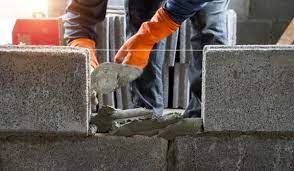Masonry Building: A Timeless Craft in Modern Construction
In the world of construction, masonry stands as a testament mason laying bricks to both tradition and durability. From ancient civilizations to modern urban landscapes, masonry building techniques have evolved and adapted, yet their fundamental principles remain steadfast. Let’s explore the essence of masonry building, its historical significance, contemporary applications, and why it continues to be a preferred choice in construction today.
Historical Roots and Evolution
Masonry, defined as the building of structures from individual units laid in and bound together by mortar, dates back thousands of years. Early civilizations such as the Egyptians, Greeks, and Romans utilized stone, brick, and other materials to erect enduring structures that still inspire awe today. The Great Pyramids of Giza, the Colosseum in Rome, and the ancient city of Machu Picchu are prime examples of masonry’s longevity and resilience.
Over time, masonry techniques spread globally, adapting to regional materials and cultural preferences. In Europe, medieval stonemasons crafted cathedrals and castles, employing intricate vaulting and arching techniques that showcased both engineering prowess and artistic finesse. In Asia, ancient dynasties built towering pagodas and fortifications using brick and stone, reflecting unique architectural styles and technological advancements.
Key Characteristics of Masonry Construction
The enduring appeal of masonry lies in its inherent characteristics:
- Strength and Durability: Masonry structures are renowned for their strength and longevity, able to withstand the test of time and varying weather conditions.
- Fire Resistance: Materials such as brick and stone offer excellent fire resistance, making masonry buildings safer and more resilient in emergencies.
- Thermal Mass: Masonry materials have high thermal mass, helping to regulate indoor temperatures and reduce energy consumption for heating and cooling.
- Aesthetic Versatility: From rustic charm to modern elegance, masonry offers diverse aesthetic possibilities through textures, colors, and patterns.
- Sustainability: Natural materials like stone and clay bricks are environmentally friendly, often sourced locally, and contribute to sustainable building practices.
Modern Applications and Techniques
In contemporary construction, masonry continues to play a pivotal role:
- Residential Construction: Many homes feature masonry elements such as brick facades, stone veneers, or even entire structures built with concrete blocks or clay bricks.
- Commercial Buildings: From office complexes to retail spaces, masonry offers architects and developers a robust, customizable solution that blends functionality with architectural flair.
- Restoration and Preservation: Historic preservation often relies on skilled masons to repair and restore heritage buildings, maintaining their original charm and structural integrity.
- Innovations in Materials: Modern masonry incorporates innovations like reinforced concrete, precast panels, and engineered stone, enhancing structural performance and design flexibility.
- Seismic Resistance: In earthquake-prone regions, masonry techniques are adapted to improve seismic resistance, ensuring buildings can withstand ground motion and minimize damage.
The Craftsmanship and Skill of Masons
At the heart of masonry lies the craftsmanship of skilled artisans. Masons undergo rigorous training to master techniques such as bricklaying, stone cutting, mortar mixing, and wall assembly. Their expertise not only ensures structural integrity but also elevates masonry into an art form, where precision and attention to detail shape the final product.
Conclusion
Masonry building, rooted in ancient traditions yet adapted for modern needs, continues to embody durability, aesthetic appeal, and sustainability in construction. Whether constructing a contemporary skyscraper, restoring a historic landmark, or crafting a cozy family home, masonry remains a cornerstone of architectural excellence and enduring quality in the built environment. As technology advances and materials evolve, the timeless craft of masonry continues to shape the cities and landscapes of tomorrow, ensuring that its legacy endures for generations to come.

